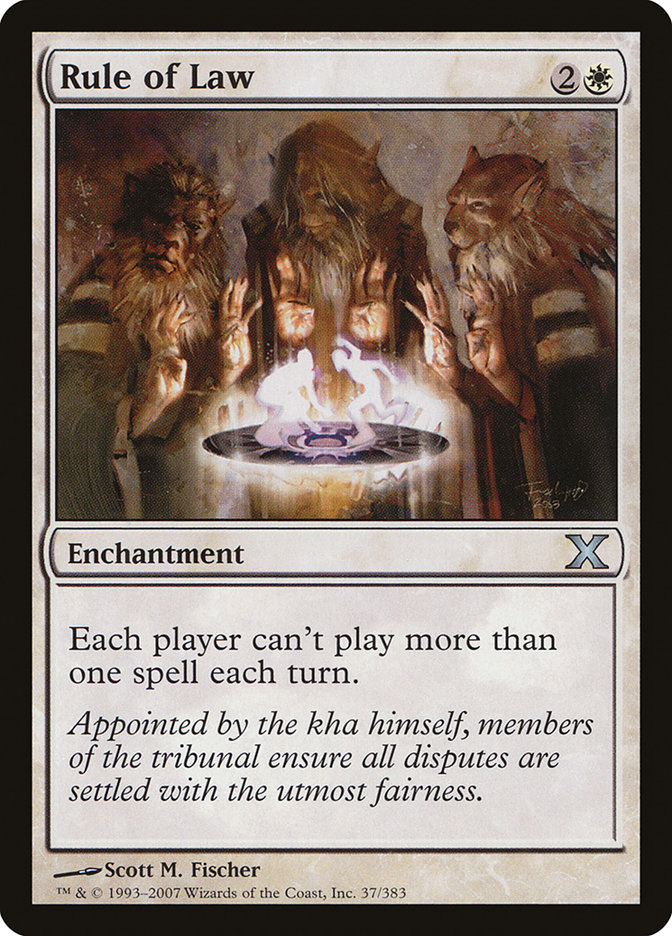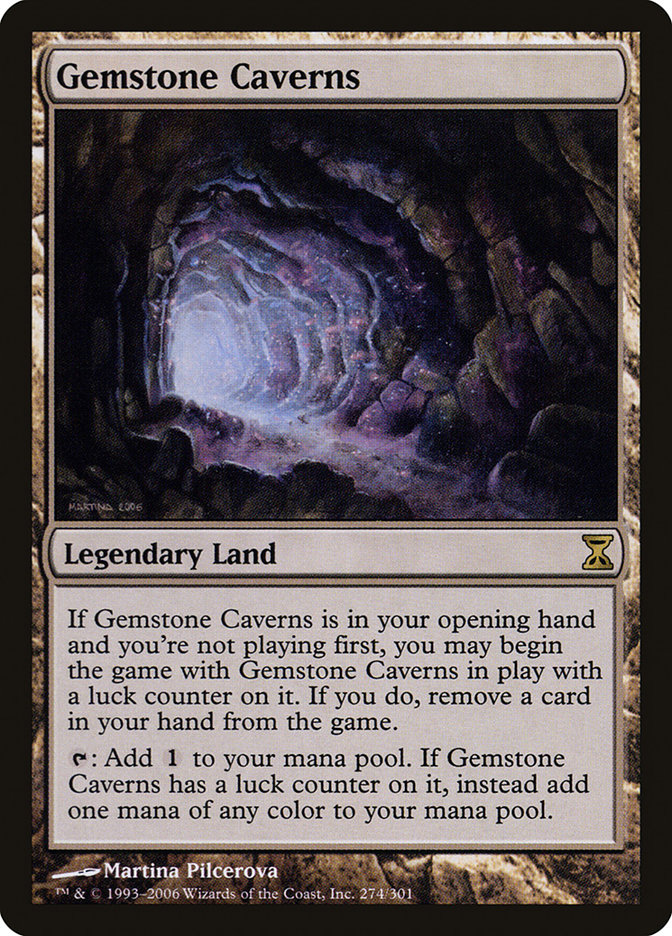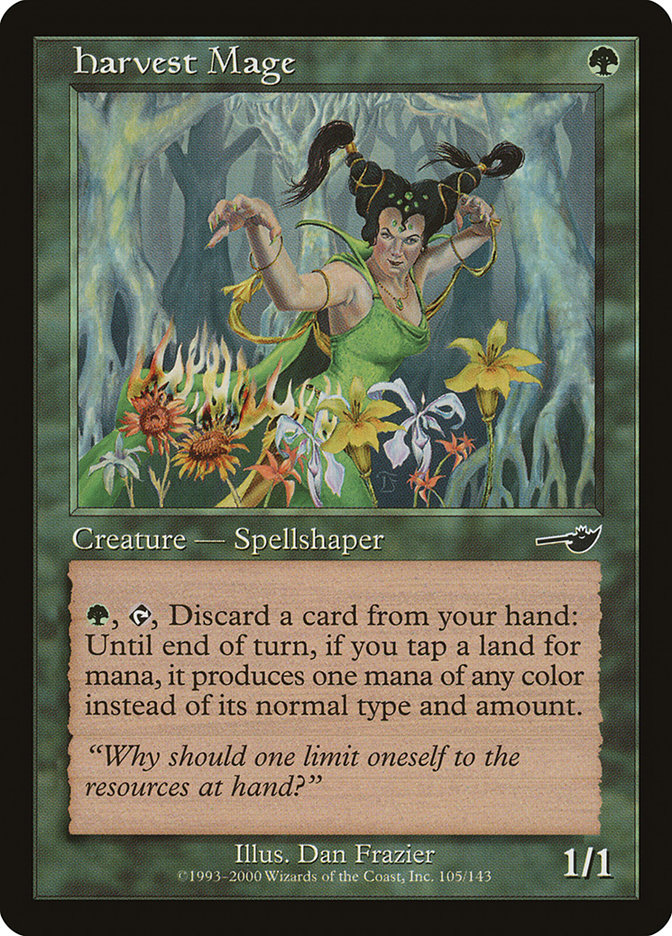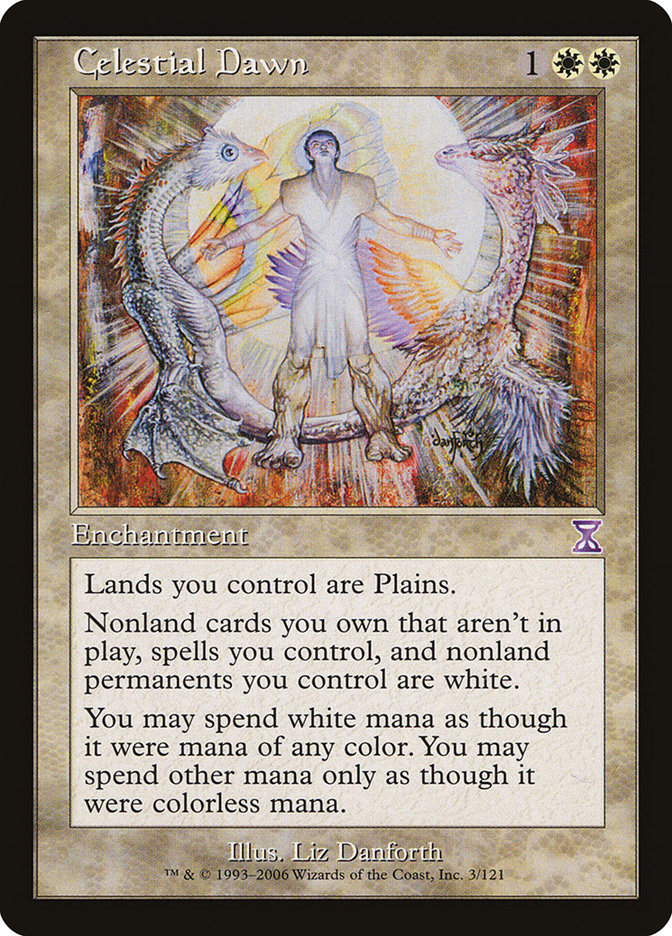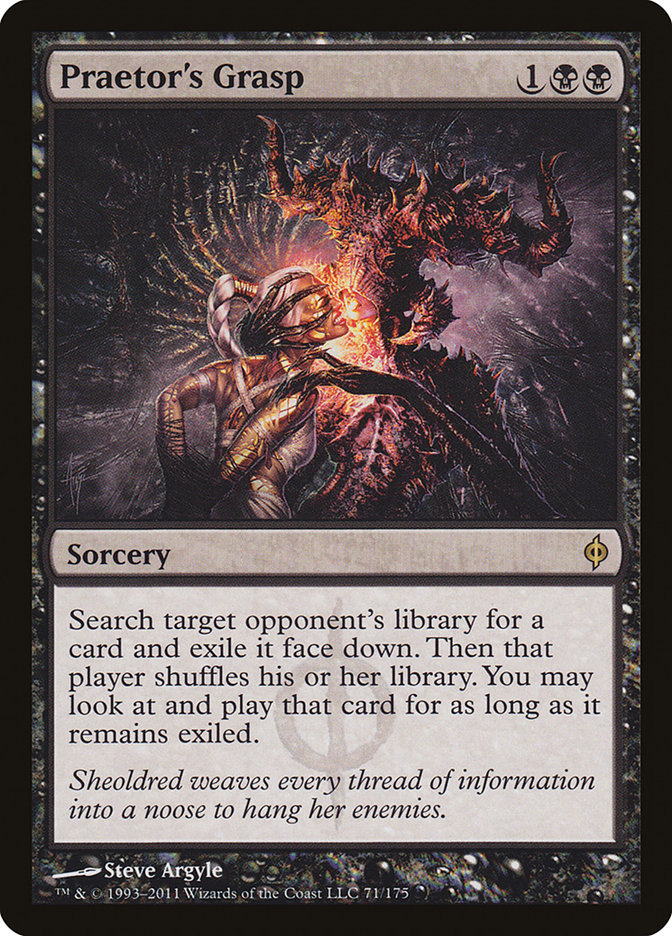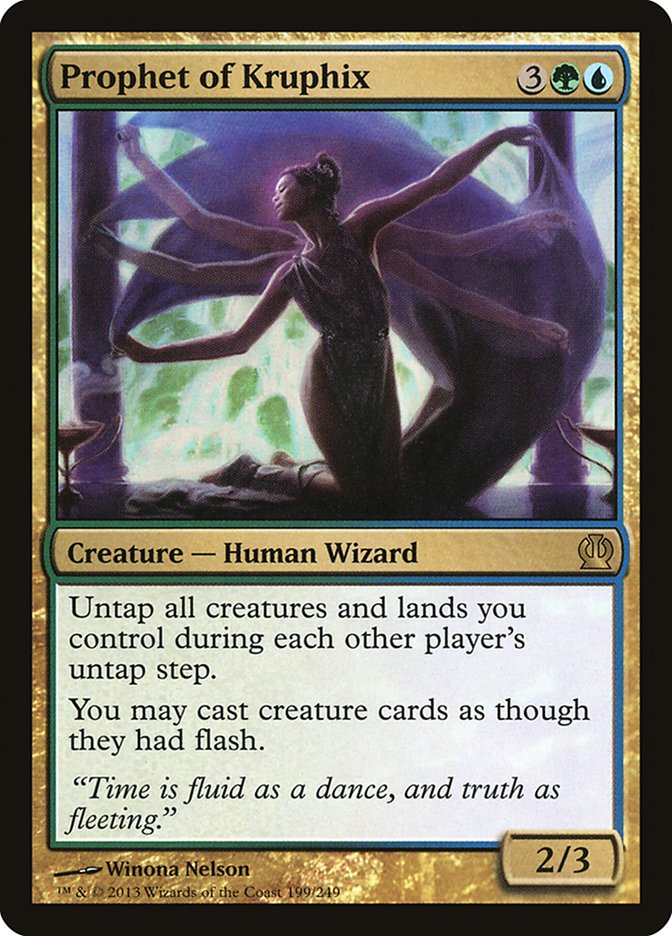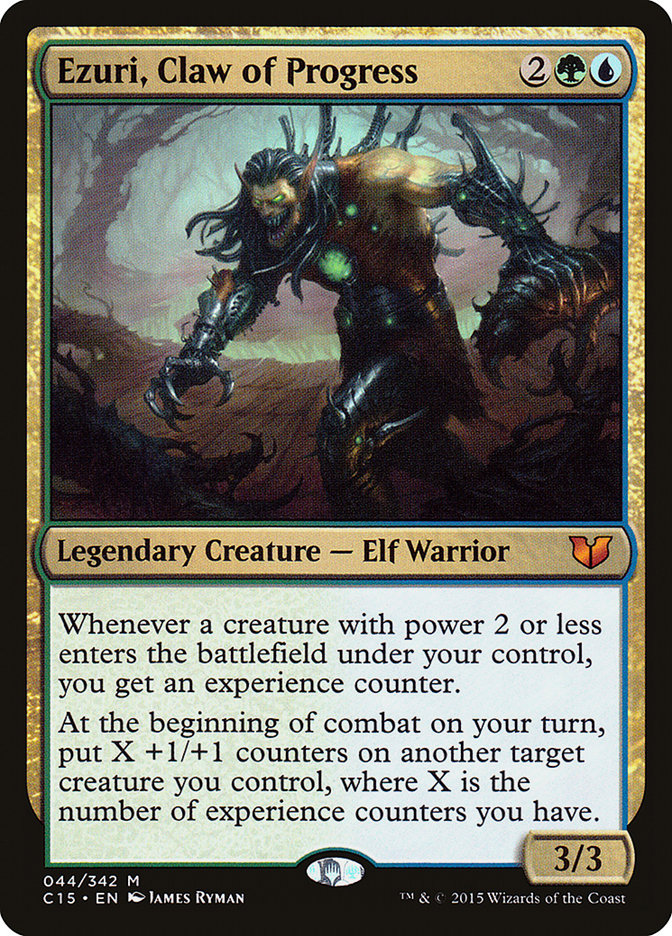My usual follow-up to a set review is to break down the changes to my suite of decks (but do not despair! We will be happy to bring you that feature in a week’s time). I normally only comment obliquely on our quarterly updates for Commander, but because this one changes two major rules and bans a card, it seems worth altering that plan and chatting about it for a bit. Since the announcement is kind of long, I’m going to quote sections of it and then expand upon them a little. For the full official announcement, you can head over to the official Commander website.
Mulligans
We promised in the last update that, with the advent of the Vancouver Mulligan, we’d be evaluating the mulligan process in Commander. This announcement is the culmination of that research. After examining several popular options, and coming up with a few of our own, we’ve concluded that the Vancouver Mulligan (with the standard first-one-free in multiplayer and a scry once you go to 6 or fewer) is the best option. The RC continues to use and recommend the Gis (“Mulligan 7s to a playable hand. Don’t abuse this”) for trusted playgroups, but that’s not something that can go in the rules.
Ultimately, the goal of mulligans in Commander is to ensure that you start the game with enough lands to be a participant. With Commander games running an hour plus, it’s unfortunate if you can’t play anything because you miss land drops and get run over quickly.
We didn’t want to solve the problems of Magic itself – mana screw and mana flood are part of the game – and players need to make a reasonable effort with their land counts, but we wanted a mulligan rule that tried to minimize unplayable opening hands. So, we brainstormed, and ran computer simulations. And what ultimately came out was… it didn’t much matter. Nothing provided a clear enough upgrade to justify having additional rules for mulligans. For example, with 37 lands, Partial Paris was “successful” (which we defined as playing a 4th land on turn 4) 89% of the time versus Multiplayer Vancouver at 86%, but it came at a cost of about a fifth of a card on average. On the whole, 86% success is a rate that seems reasonable.
If you find yourself playing 1v1 (perhaps while waiting for a friend to show up), you should still use the free multiplayer mulligan. With a deck this size, variance is high enough to make not having the free mulligan potentially punishing – without the free mulligan you drop down to about 80% success rate, which, combined with being the only opponent to focus on, leads to too many unfortunate games.
We talked about mulligans a great deal, and had talked about them for a long time. We’re gamers at heart, so we looked for perfect solutions. It’s just a puzzle to be solved, right? In this case, we came to the decision that there is no perfect solution. Variance is a thing that happens in Magic, and like we write in the announcement, we aren’t going to solve Magic’s problems (assuming you see variance as a problem) via the format. What we really want (without invoking Spice Girls songs) is for people to be able to be in the game from the get-go. We believe this solution both gives players the best chance to do this and limits any abuses at the same time.
That doesn’t mean we won’t support local groups doing what works for them. When the RC plays together, we use the Gis mulligan. The house rule at Armada Games is the modified Gis: set aside hands and draw seven until you get at least 3 lands and you have to keep a 3-lander. Some folks argue that house rules can only work for kitchen table groups. The fact that this mulligan has been the house rule at a popular game shop for a number of years says something different. One of the reasons it works is that it’s relatively simple, but the bigger reason is that the guys at the shop have done a great job of communicating it. This definitely shows the power of positive socialization.
Rule 4
We still love Rule 4. It’s a nice piece of flavor and reinforces the idea that this format goes beyond simple mechanical restrictions into a deeper philosophical approach around color and mana symbols. Its effect on the game was pretty small, but that flavor message made it worthwhile to preserve.
However, the mana system of Magic is very complicated, and trying to insert an extra rule there has consequences in the corners. Harvest Mage. Celestial Dawn. Gauntlet of Power. And now, colorless-only mana costs.
Being able to generate colorless mana more easily in Commander wasn’t going to break anything. But, it represented another “gotcha” moment for players, who were now likely to learn about Rule 4 when someone exploited the colorless loophole. We could paper over it (both “mana generated from off-color sources can only pay generic costs” and “you can’t pay a cost outside your color identity” were considered), but a lot of the flavor would be lost in the transition, defeating the purpose. Without the resonant flavor, Rule 4 was increasingly looking like mana burn – a rule that didn’t come up enough to justify its existence.
We don’t expect removing the rule to have a big impact. Some Sunburst and Converge cards might get a bit more of a look. Sen Triplets works more like you’d expect, as does Praetor’s Grasp. The clone-and-steal deck, already one of the most popular archetypes, gets better, but less than you might think. It turns out there really aren’t that many impactful non-blue activated abilities on cards that commonly get stolen in Commander. It’s OK if you can regenerate that creature you just stole, and you’ll need to work for it a bit anyway.
One side benefit to the removal of both the color production and mulligan rules is that, in terms of game play, Commander becomes a normal game of multiplayer Magic with a higher life total and a set of additive rules to bring a new piece (your Commander) into the game. That’s good streamlining in terms of teaching people the format and reducing gotcha moments while still preserving the essential flavor of Commander.
We’re not the Supreme Court, but this is as close as we might come to an RC member having a dissenting opinion. Only it’s not really a dissenting opinion but my fervent hope that Rule 4 hadn’t outlived its usefulness or practicality. I guess I was simply the last holdover. Don’t take that to mean that I was keeping the change from happening (despite what some people think, the RC isn’t just me and my droogs), I was just the last one wishing it didn’t need to change. Wishing makes nothing so, and we have to live in the practical world. Removing Rule 4 absolutely streamlines things and gets rid of some irritating loopholes. Toby happened to visit in December and this was the thing was talked about longest. The last finger grip to let go was the idea that I didn’t want copy and clone, which I find a thoroughly overrepresented strategy, to get even stronger. Toby convinced me that it doesn’t actually show that much improvement because there aren’t that many colored (and non-blue) activation costs already frequently played in the format.
I won’t say that the Oath of the Gatewatch focus on colorless mana drove this choice, but it certainly reopened the door to the conversation and cast it in a new light. The discussion over whether or not to remove Rule 4 has been going on internally for at least three years. I know folks on some forums have been chatting about it for even longer. It was time. Rule 4 will always live on in our hearts. In fact, maybe I’ll suggest that we update the page to say “Rule 4: This Rule Left Intentionally Blank.” I’ll miss you, little buddy.
Prophet of Kruphix
This was challenging. Prophet is not a traditionally obvious problem card for Commander, so we chose to take a conservative approach and see if casual groups could adapt. In the past, we’ve seen unpopular cards generate a lot of outcry, but be handled reasonably well. Powerful cards existing is OK and exploring them responsibly is an essential part of Commander.
This didn’t happen with Prophet. Casual groups haven’t been able to work around it and problematic play has not dropped off in hoped-for ways. Instead, the primary approach has been to steal it, clone it, run it yourself, or get run over. Ultimately, it seems the card is too perfect – it does everything U/G Commander players want to be doing and it does it in a way that makes counterplay difficult. With traditional boogeymen such as Consecrated Sphinx, you’re forced to expend a lot of your mana to cast it and will have a challenge protecting it as the turn goes around the table. With Prophet, it has virtual protection built in, negating that disadvantage almost immediately.
Prophet becomes only the second multicolored card on the banlist (after the structurally-problematic Coalition Victory). It’s telling just how pervasive Prophet is despite such a restriction. Yes, U/G is the most popular color combination in Commander, but we’ve reached the point where Prophet is driving U/G deck choice, rather than vice-versa. That’s centralizing in ways we can’t ignore, so it’s time for Prophet to take a break.
Whenever we decide to ban a card, we take a long look at the current list to see if any cards can come off, as we believe a casual format is better served by a minimalist ban list. After extensive discussion, however, we concluded that everything on the list served a purpose, so we won’t be unbanning anything. It’s been two years since the last (non-consolidation) card got banned, which is an acceptable growth rate!
I want to make a slight correction to the beginning of the last paragraph. Whether or not we ban a card, we actually take a look at the current list every time and consider at least one card for removal. Even if we’re reasonably sure that we don’t want to bring anything off the list, we’ll do the mental exercise of arguing for a card to get out of jail. That way, we can remain convinced that the cards belong there instead of simply defaulting to the answer that they’re there.
We had hopes for Prophet of Kruphix and held onto them for a long time. But, like with Rule 4, hope is not a plan. Listening to the community, we could feel the initial sentiment of excitement over the card continually slipping toward frustration as it became the devolution hub of games. There has to be a best card in the format, so that’s not a banning criterion, but when the (arguably) best card in the format starts driving players to the same place all the time, whether that’s from a deckbuilding angle or as a matter of enjoyment of the play experience, we feel compelled to take action.
While I expect there to be a little blowback over this banning, I suspect that a majority of players will say good riddance. I imagine that there won’t be too much dislike of our choice among players who don’t run the card themselves. In the end, our personal feelings about the card aside (I’m reasonably sure we all like it), the bottom line is that we feel the format is better without it.
And now the guys in the Commander 2015 League can get a straight answer to why I didn’t put the card into my Ezuri, Claw of Progress deck when I had the chance. I had initially given them a little misdirection about not wanting to constantly wear the target hat, and that I don’t have that many great creatures and instants to cast (which isn’t that much of a fib, truth be told), but all things considered, I simply didn’t want to waste the pick on it (although I’m reasonably certain that they would let me replace it instead of it being a dead card).
My only real question would have been how early to pick it—since no one else could—and how that might drive the other choices I made for the deck. I absolutely still first pick Cyclonic Rift, both because I need a board control card and to keep it out of Todd’s hands (he’s the other blue player). I likely still second-pick Avenger of Zendikar, so Prophet of Kruphix comes no earlier than third. The other creatures may then have gotten a bump above Night Soil—but that line of play was OBE before we even dealt out the decks.
Commander 2015 League Updates
Speaking of the League, we ended up playing four games since I last told you about it, so here are our latest updates (listed in the order that each player took them):
Keith (Meren of Clan Nel Toth)
In: Brutalizer Exarch; Disciple of Bolas; Riftsweeper; Birthing Pod
Out: Mulch; Ambition’s Cost; Lightning Greaves; Skullwinder
Keith nicked Disciple of Bolas right before Shea was about to, but it’s not like it was a real swing card for him. It’s certainly way better in Keith’s deck, since he can bring it back multiple times, making it an upgrade to Ambition’s Cost. I was a little surprised to see him pitch Lightning Greaves, but I suppose there isn’t much targeted removal that he’s worried about. Birthing Pod was on my list to think about, but my chain of creatures isn’t all that great. It will be outstanding in his deck.
Michael (Kalemne, Disciple of Iroas)
In: Dualcaster Mage; Elesh Norn, Grand Cenobite; Brightflame; Emeria Shepherd
Out: Seer’s Sundial; Urza’s Incubator; Fall of the Hammer; Stoneshock Giant
Michael surprised us (in the “oh, what a cool pick,” not “what the hell are you doing?” fashion) with Dualcaster Mage. I knew either Michael or Shea was going to pick up Elesh Norn at some point, which is really bad for my deck and the reason I’ve gone for a few larger creatures. Amusingly, Michael predicted that no one would guess the following pick, and when I snap-called Brightflame, he didn’t know what to say. I don’t know what made it occur to me; I’m sure he tipped me subliminally. Maybe I’m just developing ESP. Then he confused me with Emeria Shepherd until I realized it wasn’t Emeria Angel.
Shea (Daxos the Returned)
In: Pontiff of Blight; Grey Merchant Of Asphodel; Sepulchral Primordial; Sanguine Bond
Out: Orzhov Cluestone; Seal of Cleansing; Dreadbringer Lampads; Grave Peril
Shea’s picks all make his deck far more savage. He’s obviously going on the life gain plan, and in the game after which he picked it, Pontiff of Blight got him somewhere near 100 life (Extort is pretty saucy in a five-player game). Gray Merchant, even for a modest five or six, is similarly strong with four opponents.
Todd (Mizzix of the Izmagnus)
In: Chaos Warp; Darksteel Plate; Oblivion Stone; Slagstorm
Out: Goblin Electromancer; Seal of the Guildpact; Diluvian Primordial; Word of Seizing
Todd’s picks make sense for the kinds of things the deck likes to do. What piques my curiosity is the removal of his number two pick, Diluvian Primordial. Perhaps that’s a commentary on how bad the instants and sorceries in our decks are.
Me (Ezuri, Claw of Progress)
In: Ulamog, the Ceaseless Hunger; Multani, Maro-Sorcerer; Helm of Possession; Phyrexian Metamorph
Out: Broodbirth Viper; Caller of the Pack; Verdant Confluence; Orochi Hatchery
My back-to-back picks of the two Ulamogs reflect the fact that my creatures have been a) getting blown up and b) completely outclassed. Multani is just kind of a lolzy pick which will always be enormous in a five-player game. Once I get some evasion or trample online (Archetype of Imagination; Sun Quan, Lord of Wu; Nylea, God of the Hunt), Multani gets even better. Helm of Possession is nice to trade my Saprolings for better creatures, and Phyrexian Metamorph gives me the flexibility to copy either one of the great creatures or artifacts other people are playing
I took out the two myriad creatures because they’re a little expensive for what they do. A seven-mana creature like Caller of the Pack needs to do a little more (or I’d need a little more to leverage the power of getting the creatures, like by having Greater Good, which Keith already snagged). Broodbirth Viper is even a little weaker, in that it’s tough to keep the original alive. Maybe it comes back in when I bring Sun Quan or Bow of Nylea in). Verdant Confluence has been stuck in my hand every time I’ve drawn it, which is a sign that I want another card. It’s not a comment on the card itself so much as a comment on the card in this deck. Orochi Hatchery was pretty much the same. The minimum I’d want to cast it for is six (meaning X=3). It’s a rare circumstance so far that I don’t have to do something a little more active with that mana (and then keep up five the next turn to get value out of it).
After twelve games, we’re seeing the decks start to develop. I’ll do another play by play when we’re about halfway through to show how that development has played out (we’ve agreed to change no more than about 30 cards; I don’t think we’ve actually settled on a specific number).
This week’s Deck Without Comment is Kresh Into the Red Zone.
Creatures (34)
- 1 Solemn Simulacrum
- 1 Kokusho, the Evening Star
- 1 Withered Wretch
- 1 Eternal Witness
- 1 Yavimaya Elder
- 1 Bloodshot Cyclops
- 1 Stalking Vengeance
- 1 Greater Gargadon
- 1 Big Game Hunter
- 1 Hamletback Goliath
- 1 Seedguide Ash
- 1 Farhaven Elf
- 1 Woodfall Primus
- 1 Kresh the Bloodbraided
- 1 Lord of Extinction
- 1 Anathemancer
- 1 Acidic Slime
- 1 Butcher of Malakir
- 1 Pelakka Wurm
- 1 Urabrask the Hidden
- 1 Scavenging Ooze
- 1 Devouring Swarm
- 1 Disciple of Griselbrand
- 1 Mikaeus, the Unhallowed
- 1 Flayer of the Hatebound
- 1 Malignus
- 1 Disciple of Bolas
- 1 Nighthowler
- 1 Xenagos, God of Revels
- 1 Kozilek, the Great Distortion
- 1 Regal Behemoth
- 1 Combustible Gearhulk
- 1 Heart-Piercer Manticore
- 1 Etali, Primal Storm
Planeswalkers (1)
Lands (37)
- 1 Strip Mine
- 10 Forest
- 1 Reflecting Pool
- 1 Volrath's Stronghold
- 4 Swamp
- 1 Mountain
- 1 Taiga
- 1 Bayou
- 1 Badlands
- 1 Temple of the False God
- 1 Phyrexian Tower
- 1 Overgrown Tomb
- 1 Stomping Ground
- 1 Blood Crypt
- 1 Rakdos Carnarium
- 1 Graven Cairns
- 1 Twilight Mire
- 1 Savage Lands
- 1 Exotic Orchard
- 1 Reliquary Tower
- 1 Dragonskull Summit
- 1 Bojuka Bog
- 1 Command Tower
- 1 Kessig Wolf Run
- 1 Grim Backwoods
Spells (28)
- 1 Living Death
- 1 Sol Ring
- 1 Goblin Bombardment
- 1 Grave Pact
- 1 Kodama's Reach
- 1 Tangle
- 1 Skullclamp
- 1 Grab the Reins
- 1 Fling
- 1 Survival of the Fittest
- 1 Greater Good
- 1 Skyshroud Claim
- 1 Pernicious Deed
- 1 Cauldron Dance
- 1 Tormod's Crypt
- 1 Makeshift Mannequin
- 1 Lurking Predators
- 1 Momentous Fall
- 1 Cultivate
- 1 Essence Harvest
- 1 Flesh
- 1 Chandra's Ignition
- 1 Vampiric Rites
- 1 Deadly Tempest
- 1 Ever After
- 1 Verdant Rebirth
- 1 Dead Man's Chest
- 1 Phyrexian Scriptures

ADUN’S TOOLBOX;
ANIMAR’S SWARM;
AURELIA GOES TO WAR;
CHILDREN of a LESSER GOD;
DEMONS OF KAALIA;
EREBOS and the HALLS OF THE DEAD;
GLISSA, GLISSA;
HELIOD, GOD OF ENCHANTMENTS;
DREAMING OF INTET;
FORGE OF PURPHOROS;
KARN, BEATDOWN GOLEM;
HALLOWEEN WITH KARADOR;
KARRTHUS, WHO RAINS FIRE FROM THE SKY;
KRESH INTO THE RED ZONE;
LAVINIA BLINKS;
LAZAV, SHAPESHIFTING MASTERMIND;
ZOMBIES OF TRESSERHORN;
MELEK’S MOLTEN MIND GRIND;
MERIEKE’S ESPER CONTROL;
THE MILL-MEOPLASM;
MIMEOPLASM DO-OVER;
NATH of the VALUE LEAF;
NYLEA OF THE WOODLAND REALM;
OBZEDAT, GHOST KILLER;
PURPLE HIPPOS and MARO SORCERERS;
ZEGANA and a DICE BAG;
RITH’S TOKENS;
YOU DID THIS TO YOURSELF;
RURIC THAR AND HIS BEASTLY FIGHT CLUB;
THASSA, GOD OF MERFOLK;
THE ALTAR of THRAXIMUNDAR;
TROSTANI and HER ANGELS;
THE THREAT OF YASOVA;
RUHAN DO-OVER;
KARADOR DO-OVER;
KARRTHUS DO-OVER
If you’d like to follow the adventures of my Monday Night RPG group (in a campaign that’s been alive since 1987 and is just now getting started with a new saga called “The Lost Cities of Nevinor”), ask for an invitation to the Facebook group “Sheldon Menery’s Monday Night Gamers.”


